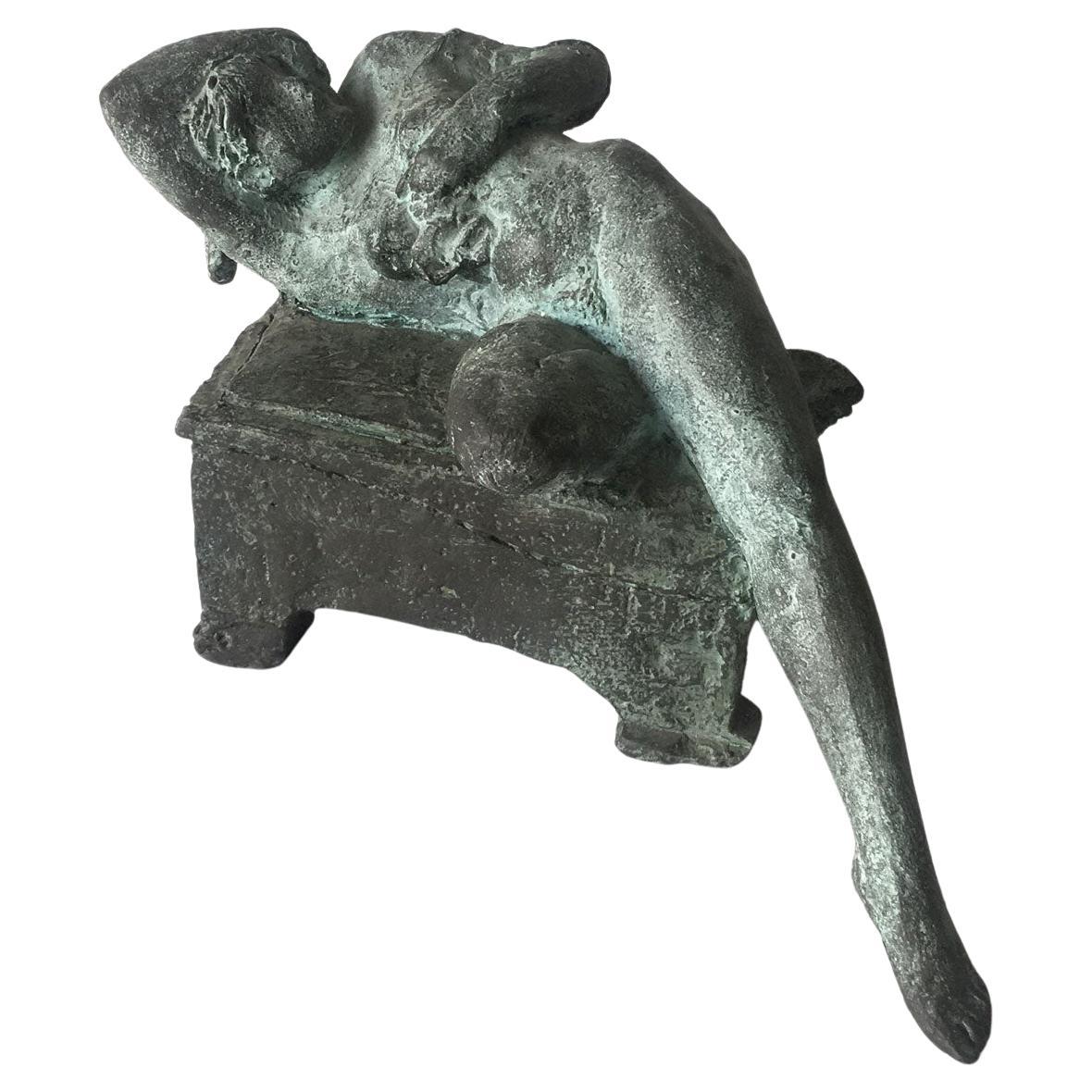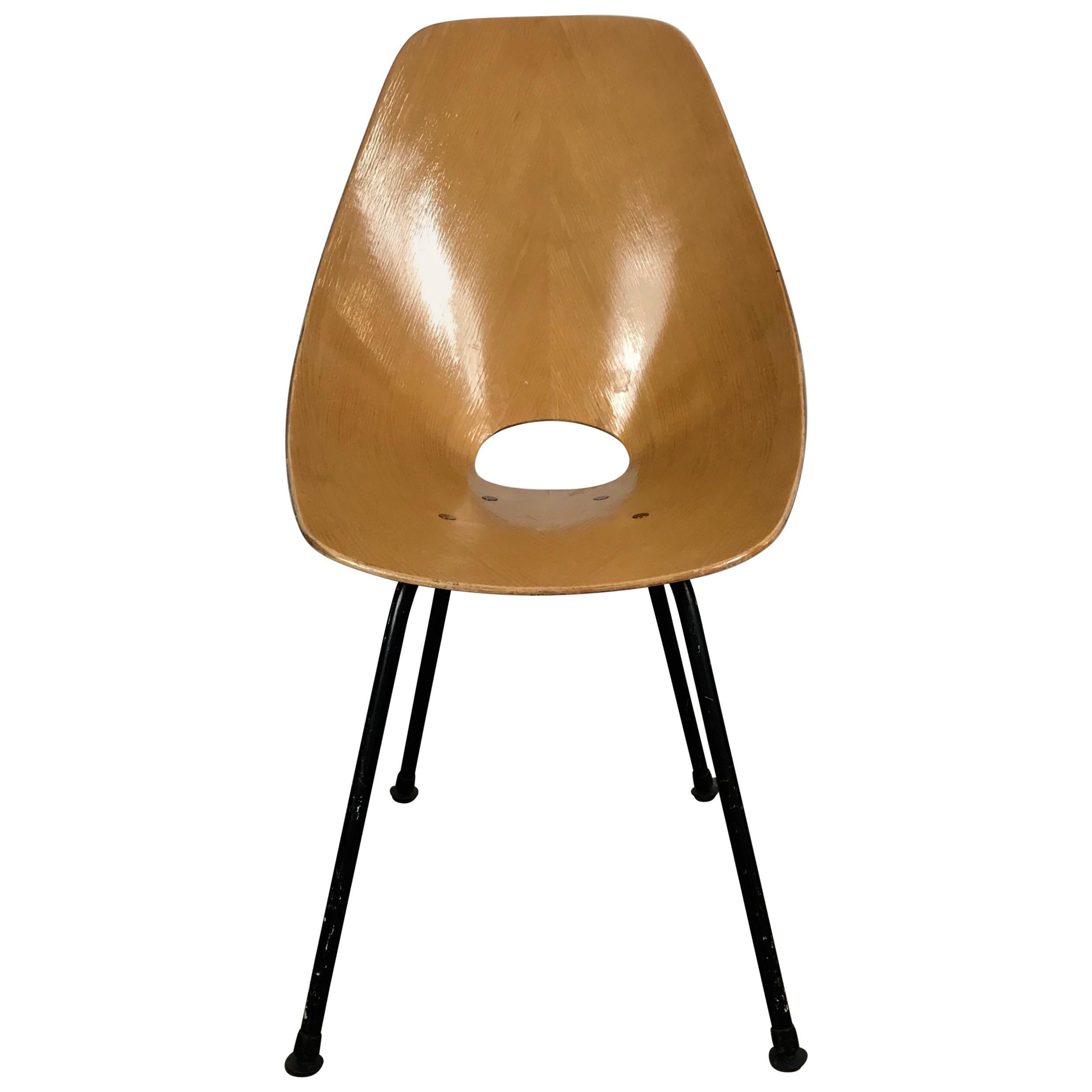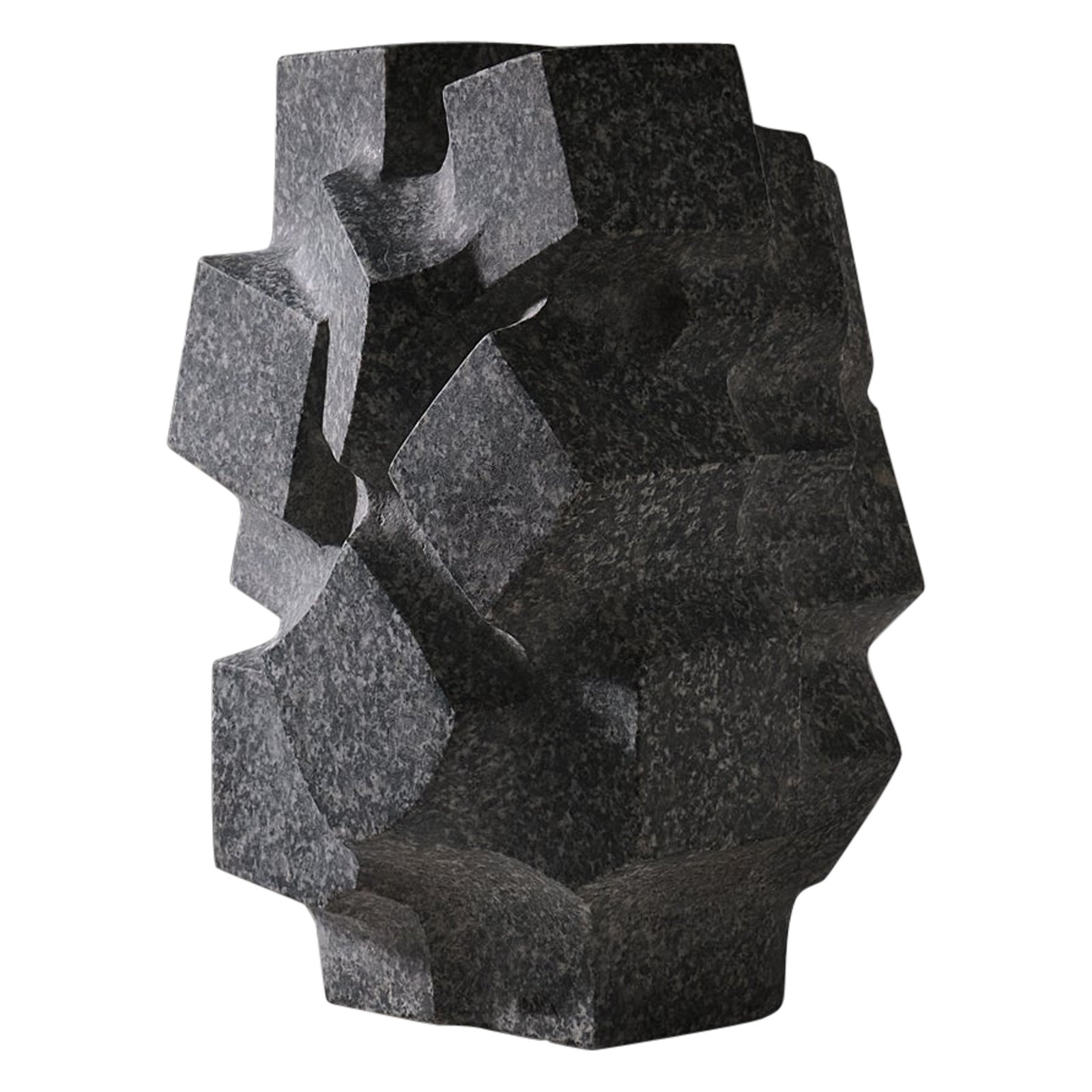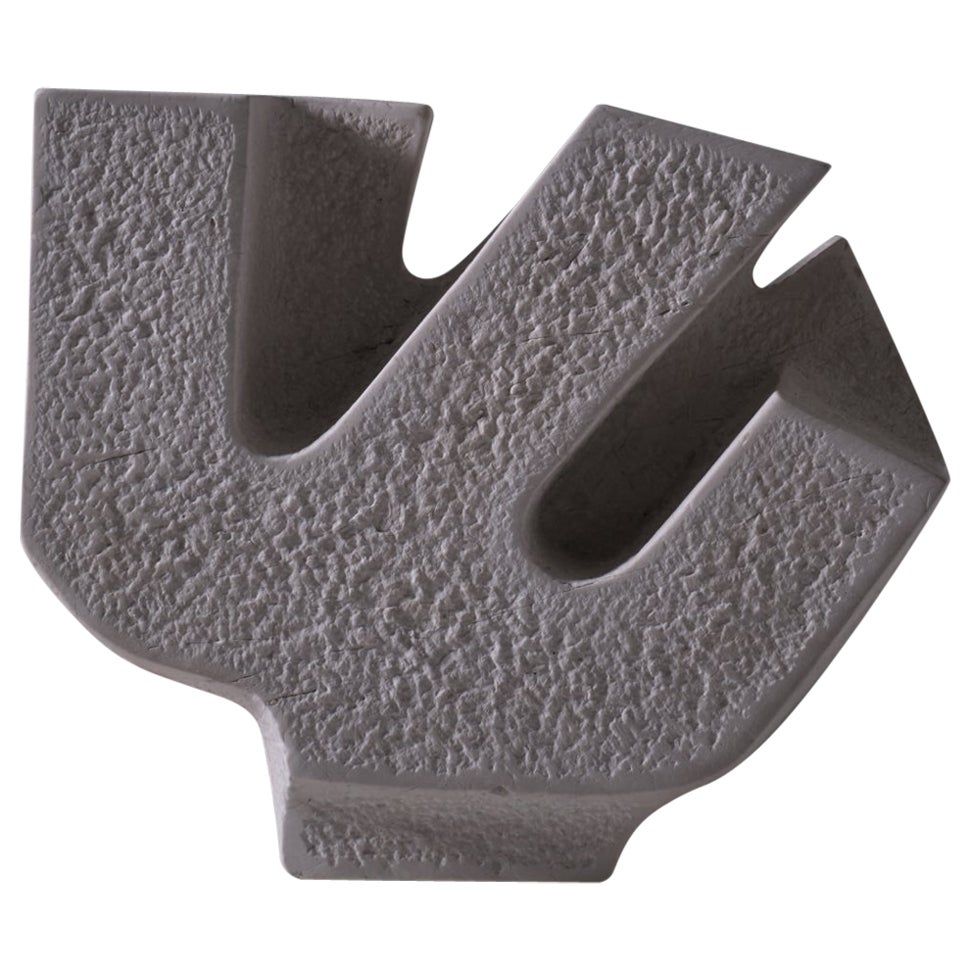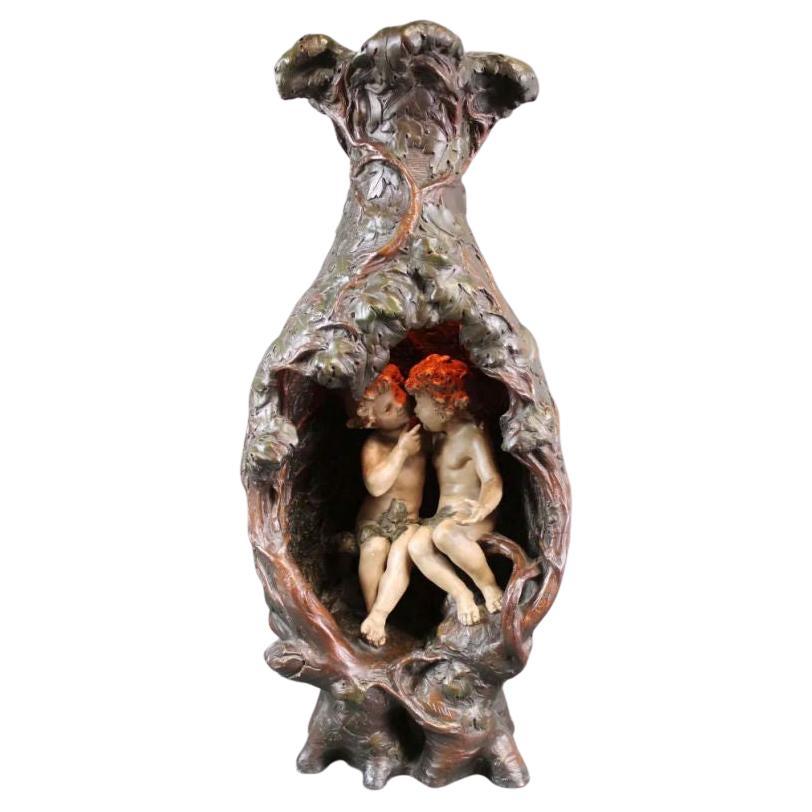Items Similar to ‘Stelle Cadenti’ (‘Falling Stars’) By Vittorio Caradossi (Italian, 1861-1918)
Want more images or videos?
Request additional images or videos from the seller
1 of 21
‘Stelle Cadenti’ (‘Falling Stars’) By Vittorio Caradossi (Italian, 1861-1918)
About the Item
An Exceptional White Statuary Marble Figural Group of Two Nymphs, Entitled ‘Stelle Cadenti’ (‘Falling Stars’) By Vittorio Caradossi (Italian, 1861-1918).
Sculpted from a single block of the finest white statuary marble, the two intertwined nymphs, representing shooting stars, are carved atop billowing drapery and clouds.
Signed ‘Prof: V. Caradossi’.
The sculpting of the intertwined nymphs so that they appear to fall through the air is both technically brilliant and composed with masterful elegance. The figures are posed as if dancing in the heavens; transfixed as they fall. Their celestial journey is made real by the fall of their hair and how the drapery clings to their bodies. They personify shooting stars as messengers of love and symbolise divine guidance and good luck.
The virtuoso genius of Vittorio Caradossi in sculpting the spiralling figures is especially evident when viewed in the round. The exceptionally detail can be seen in the decoration of their robes, which are carved with many small stars. These stars are polished so they appear raised, and show that the statue retains its original finish.
‘Falling Stars’ dates to the turn of the twentieth century and is imbued with the sensual elegance of the Art Nouveau. It the most desirable and accomplished of Caradossi’s highly decorative and commercial groups in this style, such as ‘Tre Nereidi’ (‘Three Mermaids’) and ‘Il Fumo che sale verso le Nubi’ (‘Smoke Sweeping up to the Clouds’).
Another example was purchased by William F. Woerner at the St. Louis World's Fair, 1904 and is in the University of Arizona Museum of Art (Gift of Eugene V. Nay 60.7.3). One is in The Richard H. Driehaus Museum, Chicago (2017.2.116). Other examples have sold at auction at Sotheby’s, New York, 8 November 2013, lot 12 and at Christie’s, Paris, 14 December 2018, lot 63.
Italy, Circa 1900.
Dimensions:
Height : 150 cm 59 inches
Width : 55 cm 22 inches
Depth : 37 cm 26 inches
Weight : 130 kg 286 lbs
On a Pink and Grey Granite Pedestal
Height : 67 cm 59 inches
Diameter : 44 cm 17 inches
Weight : 90 kg 198 lbs
Total Height Including Pedestal:
217 cm 85 inches
Literature:
M. Bossi, L. Tonini, L'Idea di Firenze: temi e interpretazioni nell'arte straniera dell'Ottocento: atti del convegno (Firenze, 17, 18, 19 dicembre 1986), Firenze, 1989, p. 140, 273, et 298.
V. Vicario, Gli Scultori Italiani dal Neoclassicismo al Liberty, Lodi, 1990, p. 192.
G. Salvagnini, ‘La trasferta padana di due scultori toscani’, Libero: Ricerche sulla scultura del Primo Novecento, Pescia, 2005, pp. 37-42.
Vittorio Caradossi (Italian, 1861-1918)
Born in Florence, Vittorio Caradossi studied under Augusto Rivalta (d. 1925) at the Accademia di Belle Arti. Following the completion of his training he was commissioned to execute a number of public monuments. At the 1900 International Exhibition in Paris, Caradossi exhibited his celebrated statue of the Renaissance artist Desiderio da Settignano. In 1904 it was positioned as a monument in the Piazza Desiderio, in Settignano, near Florence. In 1896 Caradossi became Accademico Corrispondente for the highly prestigious Accademia delle Arti del Disegno, and in the year of his death he was promoted to the post of Residente.
Technically superb, most of his oeuvre is dominated by highly decorative groups and single nude figures in various symbolic or allegorical guises. In works such as ‘Tre Nereidi’ (Three Mermaids), ‘Il Fumo che sale verso le Nubi’ (Smoke Sweeping up to the Clouds) and ‘Stelle Cadenti’ (Falling Stars).
Literature:
A. Panzetta, Nuovo dizionario degli scultori Italiani dell'ottocento e del primo novecento, Turin, 2003, p. 200.
- Creator:Vittorio Caradossi (Sculptor)
- Dimensions:Height: 85.44 in (217 cm)Width: 21.66 in (55 cm)Depth: 14.57 in (37 cm)
- Materials and Techniques:
- Place of Origin:
- Period:
- Date of Manufacture:Circa 1900
- Condition:Wear consistent with age and use. Dimensions: Height : 150 cm 59 inches Width : 55 cm 22 inches Depth : 37 cm 26 inches Weight : 130 kg 286 lbs On a Pink and Grey Granite Pedestal Height : 67 cm 59 inches Diameter : 44 cm 17 inches Weight : 90 kg.
- Seller Location:Brighton, GB
- Reference Number:
About the Seller
5.0
Recognized Seller
These prestigious sellers are industry leaders and represent the highest echelon for item quality and design.
Established in 1964
1stDibs seller since 2014
49 sales on 1stDibs
Typical response time: 1 hour
Associations
The British Antique Dealers' AssociationLAPADA - The Association of Arts & Antiques Dealers
- ShippingRetrieving quote...Ships From: Brighton, United Kingdom
- Return PolicyA return for this item may be initiated within 7 days of delivery.
More From This SellerView All
- ‘Gloria Victis’, A Patinated Bronze Figural Group by Mercié, Cast by BarbedienneBy Ferdinand BarbedienneLocated in Brighton, West SussexA Patinated Bronze Figural Group of ‘Gloria Victis’ (‘Glory to the Vanquished’), Cast by Ferdinand Barbedienne from the Model by Marius-Jean-Antonin Mercié (French, 1845-1916). ‘Gloria Victis’ (‘Glory to the Vanquished’). Bronze, gilt and dark brown patina. Signed 'A. Mercié', with foundry inscription 'F. BARBEDIENNE, Fondeur. Paris.' and A. Collas reduction cachet. The integral base titled 'GLORIA VICTIS'. This cast is part of a limited edition by the Barbedienne Foundry. France. Circa 1880. ‘Gloria Victis’ is one of the most recognisable and important works of sculpture of the nineteenth century and a definitive image of France’s historic national identity. The figure of glory, winged and wearing armour, carries a dying young warrior heavenwards towards fame and immortality. The compositional daring of the group must be admired for balancing two figures on the minimal support of one foot, wings spread in the moment before taking flight. Mercié was a student at the French Academy of Rome when the Prussians invaded France in 1870. Shortly after the war had begun, he executed a group depicting the figure of Fame supporting a victorious soldier. When news reached Mercié in Rome that the French had surrendered, he decided to alter his group, replacing the victorious soldier with a defeated casualty, thus transforming an allegory of ‘Glory to the Victors’ into one of ‘Glory to the Vanquished’. Completed in 1872, a year after the defeat of French soldiers against the Prussian army, the statue personifies a defeated but heroic France. The title is also a reversal of the famous formula, ‘Vae Victis’ (Death to the Vanquished), which the Gallic general Brennus exclaimed upon defeating the Romans in 390 BC. The figure of the fallen soldier was thought to represent Henri Regnault, a fellow sculptor of Mercié who was killed on the last day of fighting. Measuring 317 cm. high the original group of ‘Gloria Victis’ was unveiled in plaster at the Salon of 1872. It was bought by the City of Paris for the sum of twelve thousand francs and then cast in bronze by Victor Thiébaut for eight thousand five hundred francs. The bronze was exhibited at the Salon in 1875 and first placed in Montholon Square in the 8th arrondissement. In 1884 it was transferred to the courtyard of the Hôtel de Ville and in 1930, it entered the collection of the Musée du Petit Palais, where it can be seen to this day. The Thiébaut Frères foundry also cast Gloria Victis bronzes for the cities of Niort (requested 1881) Bordeaux (requested 1883), Châlons-sur-Marne (today, Châlons-en-Champagne; requested 1890), and Cholet (requested 1901). In 1905, the Danish brewer and art collector Carl Jacobsen was permitted to have an exact cast made of the original sculpture in Paris, on condition that the base was made 2 cm lower and bore the inscription “Original tilhører Paris By” (The original belongs to the City of Paris). It too was cast by the Thiébaut Frères foundry. Gloria Victis was one of Jacobsen’s most important and his last acquisition. Today it has been returned to its original position in the Winter Garden at Glyptoteket, Copenhagen, Denmark. The full-size plaster was shown again at the Paris Expositon universelle of 1878 alongside a bronze reduction by Barbedienne. By this time Antonin Mercié had entered into a commercial edition contract with the Ferdinand Babedienne foundry to produce bronze reductions of Gloria Victis, his most famous work. Gloria Victis is first recorded to have been produced in three sizes and by 1886 Barbedienne’s ‘Catalogue des Bronzes D’Art’ lists six sizes measuring 3/5, 9/20, 7/20, 3/10, 6/25 and 2/10, of the original. These reductions were produced by an invention of Barbedienne’s business partner Achille Collas. The Collas reducing machine was a type of complex mechanical pantograph lathe that enabled sculpture to be mathematically measured and transcribed to scale, in the round, thus making a reduced size plaster from which a bronze could be cast. Mercié's modern sculpture had become an instant classic, even receiving an entry in the Nouveau Larousse Illustré. The success of the group undoubtedly lay in the fact that it was admired not just on an aesthetic level, but also on a patriotic level, particularly in its commemoration of heroism in defeat. Immediately ‘Gloria Victis’ was recognised as a national artwork, capable of arousing patriotism and casts were ordered from Barbedienne as local memorials commemorating the war’s dead for cities across France. ‘Gloria Victis’ was considered so much a part of France’s national identity that for the 1900 Paris Exhibition, Ferdinand Barbedienne’s nephew Gustave Leblanc, loaned a bronze example to feature as part of l’Exposition centennale de l’art français. Literature: For an interesting account of the process of creating a reduction in bronze of the Gloria Victis by Barbedienne and illustrations of the casting and finishing of the bronze see: 'Ferdinand Barbedienne': Theodore Child; Harper's new monthly magazine, Volume 73, Issue 436, September 1886. ‘Contemporary French Sculptors’: The Century, Volume 33, Issue 3, Jan 1887. ‘Modern French Sculpture’: Harper's new monthly magazine, Volume 76, Issue 452, January 1888. S, Lami, ‘Dictionnaire des sculpteurs de l'Ecole française au dix-neuvième siècle’, Tome III. G.-M., Paris, 1914, p. 432. Peter Fusco and H.W. Janson, The Romantics to Rodin: French Nineteenth Century Sculpture from North...Category
Antique 19th Century French Figurative Sculptures
MaterialsBronze
- 'The Soldier of Marathon' Bronze after a Model by Cortot Cast by BarbedienneBy Jean Pierre Cortot, Ferdinand BarbedienneLocated in Brighton, West Sussex'The Soldier of Marathon' - A large patinated bronze group after a model by Jean-Pierre Cortot, Cast by Ferdinand Barbedienne. Jean-Pierre Cort...Category
Antique Late 19th Century French Figurative Sculptures
MaterialsBronze
- 'The Temptation' by Eugene-Victor CherrierBy Eugène-Victor CherrierLocated in Brighton, West Sussex'The Temptation' by Eugene-Victor Cherrier. A fine patinated bronze ewer modeled in high relief depicting Adam and Eve in the Garden of Eden. Sig...Category
Antique Early 1900s French Art Nouveau Figurative Sculptures
MaterialsBronze
- ‘Le Grand Jockey ‘I by Sidore Jules BonheurBy Isidore Jules BonheurLocated in Brighton, West SussexIsidore Jules Bonheur (French, 1827-1901) ‘Le Grand Jockey ‘ Signed 'I Bonheur' and with foundry stamp PEYROL EDITEUR'. Bronze, rich mid-brown pa...Category
Antique 19th Century French Animal Sculptures
MaterialsBronze
- Pair of Bronze Figures by Etienne-Henri DumaigeBy Etienne-Henri DumaigeLocated in Brighton, West SussexA Fine Pair of Bronze Figures Entitled 'Avant le Combat' and 'Apres le Combat', Cast from the models by Etienne-Henri Dumaige (1830 - 1888). Signed H. Dumaige, with title plaquet...Category
Antique 19th Century French Figurative Sculptures
MaterialsBronze
- Emperor Napoleon on Horseback, Cast by Susse Frères, ParisBy Susse FreresLocated in Brighton, West SussexA Large Patinated Bronze Sculpture of Emperor Napoleon on Horseback, Cast by Susse Frères, Paris, From the Model By Alfred Émilien O'Hara, Comte de Nieuwerkerke (1811-1892). Dark br...Category
Antique 19th Century French Figurative Sculptures
MaterialsBronze
You May Also Like
- 2006 Italy Bronze Sculpture by Ugo Riva Con gli Occhi Nelle StelleLocated in Brescia, ITThis is an intense bronze sculpture created by the Italian artist Ugo Riva, in 2006. Lost wax bronze. The title of this artwork is "Con gli occhi nell...Category
Late 20th Century Italian Post-Modern Figurative Sculptures
MaterialsBronze
- Italian Modernist Side Chair by Vittorio Nobili for Fratelli TagliabueBy Vittorio NobiliLocated in Buffalo, NYStunning Italian modernist side chair by Vittorio Nobili for Fratelli Tagliabue, perfect little accent chair, sculpture, retains its original pati...Category
Mid-20th Century Italian Mid-Century Modern Side Chairs
MaterialsMetal
- Abstract stone sculpture ‘Metropolis 4’ by Vittorio di Muzio, Italy 1980sLocated in Rotterdam, NLAbstract stone sculpture ‘Metropolis 4’ by Vittorio di Muzio (1924 - 2014), Italy 1986. Di Muzio studied sculpture at the l’Accademia delle Belle Arti di Brera in Milan and was train...Category
Vintage 1980s Italian Mid-Century Modern Abstract Sculptures
MaterialsGranite
- Abstract marble sculpture ‘Orione’ by Vittorio di Muzio, Italy 1977Located in Rotterdam, NLAbstract marble sculpture 'Orione' by Vittorio di Muzio (1924 - 2014), Italy 1977. Di Muzio studied sculpture at the l’Accademia delle Belle Arti di Brera in Milan and was trained by...Category
Vintage 1970s Italian Mid-Century Modern Abstract Sculptures
MaterialsMarble
- Sculptural Lamp by Luca Madrassi (1848-1918)By Luca MadrassiLocated in New York, NYThis glazed and hand-painted ceramic lighted sculpture (likely faience or gesso) by Luca Madrassi (1848-1918) depicts cherubs (putti) in a grotto, and is lit in the interior from a b...Category
Early 20th Century French Neoclassical Figurative Sculptures
MaterialsCeramic
- Double Spouted Vase by Vittorio CornacchiaBy Arnaldo Sangiorgi and Vittorio CornacchiaLocated in New York, NYGlazed ceramic. Figurative design with blue and red glazes. Produced together with Arnaldo Sangiorgi at Keramos Studio in Faenza, Italy. Artist signed on underside.Category
Vintage 1950s Italian Mid-Century Modern Vases
MaterialsCeramic
Recently Viewed
View AllMore Ways To Browse
Sale Italian Antique
Antique Stars
Italian Furniture Chicago
Antique Shooting
Italian Good Luck
Heaven Antique Furniture
Antique Marble Lot
Italian Mermaid
Pink Robe
Arizona Antique
Used Furniture Chicago Il
Italian Carrara Louis Marble
The Mermaid Sculpture
Nude Marble Statue
Century 19 Statue
Firenze Finish
Carved Marble Sculpture Nude
Small Marble Statue
